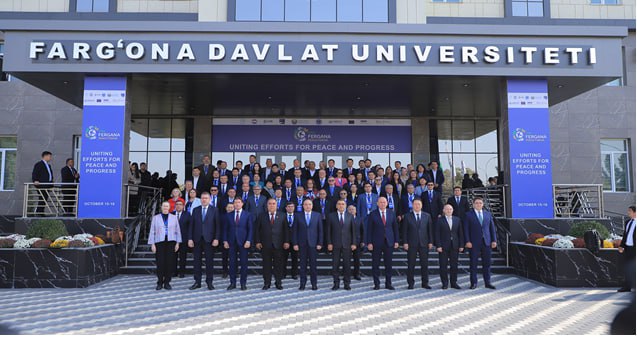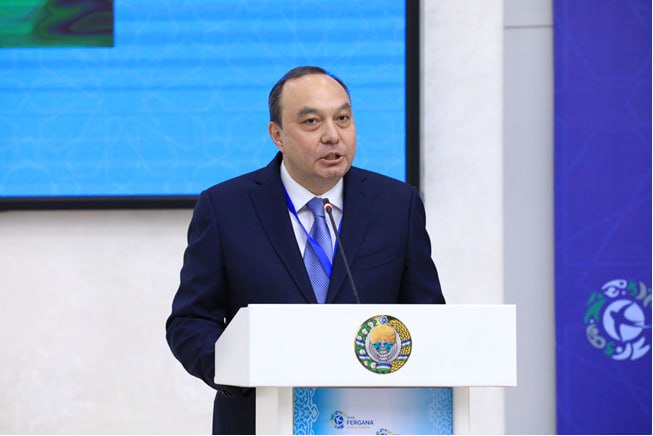Peace can sometimes be found in the unlikeliest of places, where strife is woven into a region’s identity.
Such is the case with Central Asia’s Fergana Valley, where a quiet reconciliation has been unfolding. Once a hotbed of conflicts among Uzbekistan, Kyrgyzstan, and Tajikistan, this remote stretch of fertile land, home to over 17 million people, has become home to one of the world’s most promising models of peacebuilding.

For decades, the Fergana Valley embodied the deep scars of post-Soviet fragmentation: closed borders, recurring tensions, extremist ideologies, and communities divided by countries’ borders. The underlying factors became so acute that many political pundits described the region as the “Achilles heel” of Central Asia
Yet today, thanks to the pragmatic leadership of the three countries’ governments, the same communities now enjoy open borders, growing trade, and an atmosphere of trust that would have seemed unimaginable a decade ago.
This transformation wasn’t just lucky. It was spurred by a political pragmatism that prioritizes cooperation and shared prosperity over competition and zero-sum rivalries. At its center is Uzbek President Shavkat Mirziyoyev, whose reformist and region-first agenda has helped to redefine Central Asia’s trajectory. His words at the 80th session of the United Nations General Assembly captured this spirit: “The era of closed borders, unresolved disputes, and conflicts in Central Asia is a thing of the past. Today, the process of forming a New Central Asia has begun.”
His rhetoric has turned into action. The March 2025 signing of the Declaration on Eternal Friendship and the Treaty on the Junction Point of State Borders, for example, were landmark agreements that formally ended decades of suspicion. Under Mirziyoyev’s leadership, Uzbekistan champions an agenda of openness, border reconciliation, and joint development projects that continue to transform Fergana into a fertile ground of cooperation. His pragmatic approach, focused on trade, connectivity, and people-to-people ties, inspired neighboring Kyrgyzstan and Tajikistan to adopt the same collaborative ethos.
Moreover, shared limited resources, namely water, once drove conflicts in the region, are now at the center of political consensus. Agreements brokered over the last several years now guarantee the sharing of resources of the Amu Darya river, which flows through the Valley, and those of the Syr Darya River basin, including the May 2025 agreement on water distribution for the growing season. These steps mark a shift from competition over unilateral use to cooperation backed by shared rules. What does this mean for communities? For farmers in the Fergana Valley this means predictable flows for cotton and fruit crops. For households in border villages, it means fewer disputes and more stability.
For the people of the Fergana Valley, all this means reviving the old days of living in harmony. Communities’ collective memory stretches to the ancient days of the Silk Road era, when Fergana was an open crossroads of caravans and commerce. For centuries before modern politics, diverse communities shared the same land and water, coexisting in a spirit of tolerance and interdependence. That historical “code of harmony,” as Uzbek scholars often describe it, never disappeared, but was only muffled.
The spirit of harmony was on full display at Fergana Peace Forum, held for the first time this month at the initiative of Uzbekistan President Shavkat Mirziyoyev. With participation from local political leaders and grassroot communities, the Forum sent a strong message to the world; peace in Central Asia is not shaped by outside forces, rather by the region’s own leaders and people. The active participation of grassroots communities, such as women’s groups and youth organizations, also underscored a critical point that peace must be built from the ground up, with every voice heard.
At the heart of the forum was a communiqué calling for the Fergana Peace Forum to become a permanent platform, with future meetings taking place in turn in Kyrgyzstan, Tajikistan, and Uzbekistan. Reinforcing the spirit of regional unity, under the auspices of the forum, in partnership with Kyrgyzstan Yntymak Day (Unity Day) was organized for the first time.
Famously, peace leads to prosperity. The Fergana Valley is today in the middle of an economic transformation that few could have imagined a decade ago, reflecting the creative processes taking place throughout Central Asia. Once constrained by border restrictions, the Fergana Valley is now a thriving hub of textiles, agriculture, and cross-border trade, a focal point for the entire region The gross regional product of Uzbekistan’s portion of the Valley quadrupled over the last eight years and now stands at nearly $20 billion. Over the same period, its exports expanded by 2.4 times, reaching $2.7 billion, while cross-border trade with Kyrgyzstan and Tajikistan tripled to $1.6 billion. From 2017 to 2024 alone, investments worth $31.2 billion created nearly one million new jobs, while the poverty rate fell from 13.9 to 8.6 percent.
As the world suffers a surge of conflicts, the quiet success of the Fergana Valley deserves wider attention. Indeed, the world should look here for a model of peacebuilding. Central Asia can no longer remain under the radar; it offers valuable lessons in pragmatic leadership, regional cooperation, and the power of people determined to live together in harmony.
Author :Eldor Aripov,PhD in political science, Director of the Institute for Strategic
and Regional Studies under the President of Uzbekistan.




